Posted by Elena del Valle on January 2, 2008
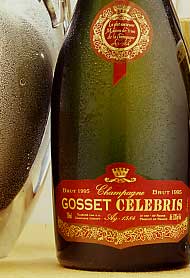
Thank you for your support in 2007! We hope you had a productive year and wonderful holiday season. Now that we have bid 2007 farewell, we are ready to welcome the New Year.
Here are some tips to help you start the year well and ahead of the curve:
Visit our website frequently. While there you can leave comments and email us suggestions for future articles and HispanicMPR.com podcast program guests. HispanicMPR.com is the only website and podcast dedicated to helping you stay informed with original content about Hispanic marketing and public relations issues.
Invite your friends and colleagues to sign up for our daily updates. It’s easy. All they have to do is add their email address to the top of the HispanicMPR.com homepage. They’ll thank you for it.
Make sure you explore our Podcast and Resources sections which are chock full of Guest Articles and exclusive downloadable audio recordings from national experts and newsmakers from across the country.
We look forward to hearing from you and keeping you informed in 2008!

Hispanic Marketing & Public Relations
Providing you essential information on America’s largest minority
Posted by Elena del Valle on December 18, 2007
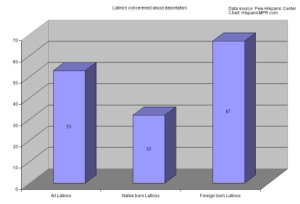
Click on image to enlarge
Although Congress has been unable to reach consensus on immigration reform, national and state authorities have introduced new enforcement measures including faster deportations, additional workplace raids, and restrictions on access to driver’s licenses and other government services. This increased attention on illegal immigration issues and heightened enforcement is causing many Hispanics unease, according to a Pew Hispanic Center 2007 National Survey of Latinos.
The Center conducted the survey by telephone from October 3 through November 9, 2007 among a random sample of 2,003 Hispanic adults the center considered nationally representative. Nine researchers contributed to the final report.
Based on the results of the survey, Pew researchers believe Hispanics, foreign born Latinos in particular, view illegal immigration in a positive light and consider it is beneficial for Latino communities and the country’s economy overall. More than 50 percent of Latinos surveyed in the United States worry that they or a loved one could be deported.
About half of Hispanic survey respondents believe they have suffered as a direct result of increased focus on immigration, and two thirds are convinced their life is more difficult due to the failure of Congress to enact legislation to address immigration reform.
Target Latinos effectively by anticipating changes in the market with
“Hispanic Projections with 2007-08 update” audio recording

Presenter Roger Selbert, Ph.D.
Find out
- About Latino buying power growth in the future
- How Latino market growth compares with other markets in the U.S.
- What drives the rise of Latino economic clout
- Who should target the Latino market
- What is the size of the Hispanic affluent market
- If the luxury Latino market is growing
Stay ahead of your competion with “Hispanic Projections”
Survey respondents said some of the negative effects on them of the public’s focus on illegal immigration include difficulty finding work or a place to live. They are also less likely to rely on government services or travel outside the country; and they believe there is a greater probability than in the past that they will be asked to produce documents to prove their immigration status.
While many Latino respondents oppose the new federal and state enforcement measures, non-Hispanics are supportive of the new illegal immigration enforcement policies. About 75 percent of Hispanics surveyed disapprove of workplace raids; about 79 percent prefer local police not play an active role in identifying illegal immigrants; and 55 percent disapprove of states checking for immigration status before issuing driver’s licenses. A slight majority of non-Hispanics favor workplace raids and a heavy majority favor driver’s license checks.
At the same time that Hispanics and non Hispanics have contrary opinions about enforcement policies, there is a significant difference in opinion within the Latino community about enforcement issues, illegal immigration, and discrimination. Native born Hispanics and their foreign born counterparts sometimes disagree, according to the survey findings. Native born Hispanics opinions are closer to those of the rest of the U.S. population regarding enforcement policies than those of foreign born Hispanics.
Native born Latinos are less likely than foreign born Latinos to describe a negative personal impact due to increased focus on illegal immigration. Non citizen Hispanics feel “much more vulnerable” than Hispanics who are citizens. Latinos who are not citizens are twice as likely as Hispanic citizens to worry about deportation and to feel current policies have a direct impact on their lives.
According to the survey, in spite of the new felt vulnerability Hispanics see as the result of the current anti immigration climate, Hispanics themselves don’t seem to oppose illegal immigration. Instead, Latinos hold immigration, even when it’s illegal, in high esteem. Native born Latinos have a more positive attitude about the effect of illegal immigration than do foreign born Latinos. More than half, 64 percent, of native born Latinos think there is a positive effect compared to 54 percent who, only five years ago, thought the impact of illegal immigration was beneficial.
The Pew Hispanic Center, an initiative of the Pew Research Center, is a non-partisan, non-advocacy research organization based in Washington, D.C. The Pew Hispanic Center is funded by The Pew Charitable Trusts.
Listen to Cesar Melgoza discuss
“Changing Latino Landscape” audio recording

Presenter Cesar Melgoza, managing director, Latin Force Group
Find out about
• How demographic, social, political and economic factors affect Latinos
• Number of Hispanics in U.S.
• Hispanics as a percent of the mainstream population
• Number of Puerto Ricans in Puerto Rico
• Hispanics, including Puerto Rico, as a percent of U.S. mainstream
• Number of Asians and African Americans
• Estimated size of Hispanic market by 2012
• Percentage growth of new Hispanics per year
• Number of counties where Latinos are majority
• Areas of significant Latino growth
• Area of U.S. with a 950 percent Latino growth
• Role of acculturation
• Hispanicity segmentation
Click here for information on the Changing Latino Landscape
Posted by Elena del Valle on December 14, 2007

Patron tequila bottles
Photos: The Patrón Spirits Co., Luxury Institute
Wealthy consumers in the United States responding to a recent Luxury Institute Survey selected Patron tequila as their top choice among 11 tequila brands. According to the recent survey, the second and third choices were 1800 Reposado and Herradura. About 3 percent of the survey respondents were Hispanic.
High net-worth consumers rated Patron the most prestigious tequila by a wide margin in the 2008 Luxury Brand Status Index (LBSI). The brand had the highest score for all LBSI components and both outcome metrics. In addition to Patron, 1800 Reposado and Herradura the other brands included in the survey were Cabo Wabo, Cazadores, Corazon, Don Julio, Gran Centenario, Jose Cuervo Reserva, Milagro Reposado, and Sauza Tres Generaciones.

Milton Pedraza, chief executive officer of the Luxury Institute
“The Luxury Institute was created for high net-worth consumers who believe that peer-to-peer ratings are the most informative and accurate guides to use in making intelligent purchasing decisions in all categories of luxury goods and services,” said Milton Pedraza, chief executive officer of the Luxury Institute. “Even in the arena of wines, liquors and spirits, where so many so-called experts exist, we believe that our surveys, which deliver the collective wisdom of this highly-educated, savvy, and largely self-made group, deliver far more accurate ratings since they reflect the impartial views of high net-worth consumers on metrics that really make a difference.”
Hispanic Marketing and Public Relations Understanding and Targeting America’s Largest Minority book

“A must resource for practitioners/professionals expecting to reach US Hispanics; also valuable for college programs in marketing, public relations and communications. Highly recommended.”
Choice magazine
Click here for information on the Hispanic Marketing & Public Relations books
The proprietary Luxury Brand Status Index (LBSI) survey measures the prestige of leading brands among wealthy Americans. The Luxury Institute surveys online a national sample of 1,760 wealthy American consumers, with an average income of $346,000 and average net worth of $3.8 million. Survey results are weighted to match demographic and net worth profiles of the same audience according to the latest Survey of Consumer Finances from The Federal Reserve.
The Luxury Institute is an independent ratings, reviews and research institution specializing in the high net-worth consumer. The Institute publishes proprietary publications and research for wealthy individuals and the companies that cater to them on trends, high net-worth consumer rankings and ratings of luxury brands.
The Patrón Spirits Company portfolio includes Gran Patrón Burdeos, a new limited-production añejo tequila racked in Bordeaux barrels; and the following tequilas: Gran Patrón Platinum, Patrón Silver, Patrón Añejo (blended and oak-aged for a minimum of 12 months), and Patrón Reposado (blended to incorporate the taste of Patrón Silver with a hint of the oak of Patrón Añejo).
“Beyond the 30 Second Spot” audio recording
Listen to a 105-minute discussion




Panelists Ivan Cevallos, Hunter Heller, Kitty Kolding and Cynthia Nelson
Our panel of national experts discuss
• Challenges of measuring the impact of the 30-second ad spot
• Innovative tools are useful to reach Latinos
• Changes in marketing to Hispanics
• On which market segment are the changes most relevant
• Effects of technology and time shift on consumer behavior
• Role of multi-screens
• Getting started
• Tips for marketing professionals
Click here to find out about Beyond the 30 Second Spot
Posted by Elena del Valle on December 13, 2007

Photos: Bilingual Marketing Group
Bilingual Marketing Group recently launched VivaReal.us, a Spanish language website offering home buyers bilingual real estate information about professionals, home-buying how-to videos and podcasts online. The website features original articles, without a byline, written by freelance writers, native Spanish speakers, who have lived in the designated area for two years or longer; as well as audio content in Spanish and English to help Spanish speaking home buyers learn about the home-buying process in easy to understand terms. There are seven videos, five full video guides and two news in video recordings.
Topics listed include How to buy a home (Cómo comprar una casa) and How to finance a home (Cómo financiar una casa). The website features English language video interviews with the president and a former board member of the National Association of Hispanic Real Estate Professionals. Organizers hope to include property listings, blogs, and social networking features soon.

Brian Requarth, chief executive officer of Bilingual Marketing
“Our goal is to create a search engine optimized, online community that connects Hispanic home buyers with easy-to-understand information about the home-buying process and the real estate professionals and experts that can help them buy a home,” said Brian Requarth, chief executive officer of Bilingual Marketing. “VivaReal.us is totally tailored to the Latino experience. Unlike many sites that translate English content into Spanish, we wrote everything in Spanish with the Latino home buyer specifically in mind.”
Discover how to reach Latinos in language today with
“Hispanic Market Translation Issues” audio recording

Presenter Martha E. Galindo
Translation company owner Martha E. Galindo explains
-
Why it’s important to reach your clients in language
-
Ins and outs of translations issues
-
How to select a translator
-
What to expect
-
How to save on translation costs
-
Much more
Find out why its important to reach clients in language ”Hispanic Market Translation Issues”
“VivaReal.us takes consumer education to the next level by making the information widely available to homebuyers in audio and video formats,” said Timothy Sandos, chief executive officer of the National Association of Hispanic Real Estate Professionals. “Tools like this will help take the fear factor out of the process and foster a real understanding of home-buying for Spanish speaking consumers.”
According to promoters of the website, although Hispanic homebuyers are expected to drive the first-time buyer market in the years to come, there is a shortage of homebuyer resources in Spanish in the marketplace. A 2006 University of Notre Dame Institute for Latino Studies report indicates that between 1995 and 2005 30 percent of the total growth in U.S. households was from Hispanics.
For that same time period almost two-thirds of the total growth in Hispanic households was for owner-occupied homes; Hispanic gains played a role in stabilizing the rental home market by offsetting 98 percent of the net decrease in non-Hispanic renter-occupied households nationwide. In 2003, 3.2 million Hispanic renters dedicated 50 percent or more of their income to housing, a 32 percent increase in only two years.
Bilingual Marketing Group was founded in 2004 and forms part of ColConnect, a California LLC. The Santa Rosa, California company offers online marketing services to real estate related business in the United States and also has an office in Bogotá, Colombia. The company owners and senior officers are Requarth, Andrea Palacios, chief financial officer and Thomas Floracks, chief technology officer.
Target Latinos effectively by anticipating changes in the market with
“Hispanic Projections with 2007-08 update” audio recording

Presenter Roger Selbert, Ph.D.
Find out
- About Latino buying power growth in the future
- How Latino market growth compares with other markets in the U.S.
- What drives the rise of Latino economic clout
- Who should target the Latino market
- What is the size of the Hispanic affluent market
- If the luxury Latino market is growing
Stay ahead of your competion with “Hispanic Projections”
Posted by Elena del Valle on December 12, 2007

The McSkillet Burrito is made with scrambled eggs, sausage, potatoes, cheeses, red and green bell peppers, onions and salsa roja
Photo: McDonald’s
Thirty years after the national introduction of the Egg McMuffin sandwich, McDonald’s launched the new McSkillet Burrito, a hand-held made-to-order breakfast burrito wrapped in a warm flour tortilla. At the same time, since 2002 McDonald’s breakfast sales have increased 42 percent.

Jan Fields, chief operating officer, McDonald’s USA
“McDonald’s is the ideal destination for breakfast,” said Jan Fields, executive vice president and chief operating officer, McDonald’s USA. “We believe the ultimate convenience is the quality and value we bring our customers every day, with the introduction of the McSkillet Burrito underscoring our presence in the breakfast category.”
The McSkillet Burrito sells for $2.49 and is the first national breakfast product launch since the McGriddles sandwich in 2003. The new breakfast dish combines scrambled eggs, sausage and skillet potatoes with cheese, red and green bell peppers, onions and salsa roja.
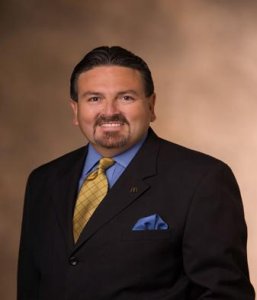
J.C. Gonzalez-Mendez, senior vice president North America Supply Chain Management McDonald’s USA
“As we continue to develop quality, convenient menu options that meet our customers’ needs, the McSkillet Burrito is the ideal breakfast choice for people on-the-go,” said J.C. Gonzalez-Mendez, senior vice president North America Supply Chain Management McDonald’s USA, LLC. “At McDonald’s, our legacy of innovation continues at breakfast.”
“Best in Class Hispanic Strategies” audio recording


Presenters Carlos Santiago and Derene Allen
-
Find out what makes 25 percent of the top 500 Hispanic market advertisers out perform the remaining companies
-
Discover what questions to ask, steps to take to be a Best in Class company
Click here for information on “Best in Class Hispanic Strategies” audio recording
In 1977, McDonald’s introduced its first breakfast food, the Egg McMuffin, a portable breakfast sandwich made with eggs, Canadian-style bacon and American cheese on a toasted English muffin, created by owner and operator Herb Peterson. Since then, McDonald’s breakfast menu has expanded to include the Sausage Biscuit, McGriddles sandwich and Breakfast Burritos, signature platters, hash browns, Cinnamon Melts, Fruit ‘N Yogurt Parfait and Snack Size Fruit & Walnut Salad.
McDonald’s USA, LLC, is a fast food provider in the United States. More than 80 percent of McDonald’s 13,700 U.S. restaurants are independently owned and operated by local franchisees. One third of McDonald’s employees in the United States are Latino and 11 percent of the company’s board members are Hispanic.
Listen to Cesar Melgoza discuss
“Changing Latino Landscape” audio recording

Presenter Cesar Melgoza, managing director, Latin Force Group
Find out about
• How demographic, social, political and economic factors affect Latinos
• Number of Hispanics in U.S.
• Hispanics as a percent of the mainstream population
• Number of Puerto Ricans in Puerto Rico
• Hispanics, including Puerto Rico, as a percent of U.S. mainstream
• Number of Asians and African Americans
• Estimated size of Hispanic market by 2012
• Percentage growth of new Hispanics per year
• Number of counties where Latinos are majority
• Areas of significant Latino growth
• Area of U.S. with a 950 percent Latino growth
• Role of acculturation
• Hispanicity segmentation
Click here for information on the Changing Latino Landscape
Posted by Elena del Valle on December 11, 2007

Mac Wilcox, CheckSpring Bank; D. Lee Ezell, Community Board 4; Earl Brown, Bronx; Dimetris Giannoulias, CheckSpring Bank; Ruben Diaz, Jr., New York State Assembly; Congressman Jose E. Serrano; Eric Pallas, CheckSpring Bank; and Charles Wilcox, CheckSpring Bank
Photo: Miguel Rjl
In early November 2007, CheckSpring Bank opened its flagship branch on 167 Street in the South Bronx neighborhood of New York City, a few blocks north of the new Yankee Stadium. According to a bank representative, it is the first new bank headquartered in the neighborhood in 25 years. The new bank will target under-served and under-banked Latinos in the community.
“The opening of CheckSpring Bank is certainly representative of the continued and needed economic development that is now occurring in our Bronx community,” said Rita Di Martino, chair of the Board of the Bronx Lebanon Hospital Center.
CheckSpring offers traditional and non-traditional banking services to the area’s Latino community, and bilingual customer service in Spanish and English. Products include banking and loans for consumers and small businesses, check cashing from bank teller windows for depositors and the public, money transfers, as well as checking and savings accounts. The bank promises to discount check cashing fees for depositors.
Target Latinos effectively by anticipating changes in the market with
“Hispanic Projections with 2007-08 update” audio recording

Presenter Roger Selbert, Ph.D.
Find out
- About Latino buying power growth in the future
- How Latino market growth compares with other markets in the U.S.
- What drives the rise of Latino economic clout
- Who should target the Latino market
- What is the size of the Hispanic affluent market
- If the luxury Latino market is growing
Stay ahead of your competion with “Hispanic Projections”
CheckSpring officials hope the bank’s convenient hours (the bank will open 8 am to 8 pm Thursdays and Fridays and Saturday mornings), location, innovative products and Latino oriented customer service will win over under-banked customers who historically have remained elusive.
“Our mission is to create a new kind of bank, one that provides Bronx customers with improved access to the full spectrum of financial services, and a suite of affordable banking products that serves people’s needs, facilitating savings and wealth creation,” said Charles Wilcox, cofounder and president, CheckSpring Bank. “We’re thrilled to be launching our headquarters branch of CheckSpring Bank on 167th St. and we anticipate a long and close association with customers and community influentials here in the Bronx.”
CheckSpring plans to work closely with local community organizations and support their efforts to provide financial education outreach programs to help the under banked community better access the tools they need to create and manage financial resources.
According to the bank’s website, the top three CheckSpring Bank executives are Eric Pallas, president, Rosa Pavia, chief operating officer and Wallingford Lee, chief lending officer.
“Beyond the 30 Second Spot” audio recording
Listen to a 105-minute discussion




Panelists Ivan Cevallos, Hunter Heller, Kitty Kolding and Cynthia Nelson
Our panel of national experts discuss
• Challenges of measuring the impact of the 30-second ad spot
• Innovative tools useful to reach Latinos
• Changes in marketing to Hispanics
• For which market segment are the changes most relevant
• Effects of technology and time shift on consumer behavior
• Getting started
• Tips for marketing professionals
Click here to find out about Beyond the 30 Second Spot
Posted by Elena del Valle on December 6, 2007

Marsha Butler, DDS, vice president, Global Oral Health and Professional Relations, Colgate
Photo: Colgate-Palmolive
Recently released figures from the Center for Disease Control and Prevention based on the most recent information available (2003-04) indicate that the percentage of Americans with untreated tooth decay began rising this decade, reversing nearly 50 years of improvement in dental health. The reversal seems to be directly related to access to dental care issues. According to an October 11, 2007 The New York Times article, increase in dental fees and 100 million people without dental insurance are to blame.
“For children between the ages of 5 and 17 in the U.S., tooth decay is more common than asthma, more common than hay fever, and it poses a significant threat to our children’s overall health and well-being,” said Marsha Butler, DDS, vice president, Global Oral Health and Professional Relations, Colgate.
As part of its community affairs outreach, Colgate launched the Bright Smiles, Bright Futures dental health challenge program to reach 100 million children in the United States with free dental screenings, treatment referrals and oral health education by 2010. Since 1991, Colgate has reached 73 million children and 59 percent of the reach has been to Hispanic children.
The program’s goals are furthered through the use of a Colgate mobile dental van, one of a fleet of eight “clinics on wheels” that the company sponsors around the U.S., reaching about 130 urban and rural cities across the country.
“Colgate is committed to promoting oral health among Hispanic children and their families. Our mobile dental vans visit schools as well as community enters in neighborhoods with large Hispanic populations. We partner with professional organizations like the Hispanic Dental Association, whose members volunteer aboard the vans that visit schools, community centers and festivals across the United States,” said David Cardona, Marketing Director, Multicultural Marketing – Oral Care/Colgate Palmolive Company. “Colgate also oversees bilingual, cross-curricular educational initiatives designed to raise awareness in Hispanic communities about the importance of maintaining good dental hygiene and the connection between one’s oral and overall health.”
“Best in Class Hispanic Strategies” audio recording


Presenters Carlos Santiago and Derene Allen
-
Find out what makes 25 percent of the top 500 Hispanic market advertisers out perform the remaining companies
-
Discover what questions to ask, steps to take to be a Best in Class company
Click here to buy “Best in Class Hispanic Strategies” audio recording
The Bright Smiles, Bright Futures program has hosted events in cities with large Hispanic populations like San Diego, New York, Chicago and Houston. Recently Colgate’s program made a stop in Miami, one of the top Hispanic markets in the country, where Colgate-Palmolive partnered with the United Way and Boys and Girls Clubs of Miami to host an oral health event featuring teen star Corbin Bleu, music, games and the dental van with free screening for 300 Miami-Dade Elementary School students.
“When you think about meeting people at your school, in your neighborhood, from different states or even different countries, there’s nothing more welcoming than a smile,” Corbin Bleu told a group of South Florida students recently. “Traveling on tour, I’ve had an opportunity to see what a smile can do to put people at ease. When I learned of the risks oral health disease presents, especially for kids in urban and rural areas, I wanted to help Colgate and United Way draw attention to the importance of maintaining good dental health.”
“At Colgate, our objective is to work with communities to help reduce and prevent oral health disease, and we are providing children and their families with information and skills that allow them to take charge of their dental health. Over the past few years, we’ve hosted oral health festivals and awareness activities for children from LA to New York. We have a network of eight mobile dental vans that set up clinics in target areas and at cultural events across the United States. Globally, we’ve also reached out to more than 500 million people in 80 countries, encouraging children to see their dentists and recruiting parents, teachers, and community and professional organizations, to help raise awareness about the importance of maintaining good oral health,” said Butler.
Colgate-Palmolive is a global consumer products company, focused on Oral Care, Personal Care, Home Care and Pet Nutrition. Colgate sells its products in over 200 countries and territories around the world under such brand names as Colgate, Palmolive, Mennen, Softsoap, Irish Spring, Protex, Sorriso, Kolynos, Elmex, Ajax, Axion, Soupline, and Suavitel, as well as Hill’s Science Diet and Hill’s Prescription Diet pet foods.
“Marketing to New Hispanic Moms – a case study” audio recording

Presenter Cynthia Nelson, COO, Todobebe
Find out about
• New Latina mom market
• Baby demographics including market size, profile
• New moms’ language preferences
• Latino baby market trends
• Factors influencing Hispanic baby market
• Location of new Hispanic moms’ market
• Issues affecting new Latino moms
• Todobebe strategies
Click for information on “Marketing to New Hispanic Moms – a case study”
Posted by Elena del Valle on December 5, 2007
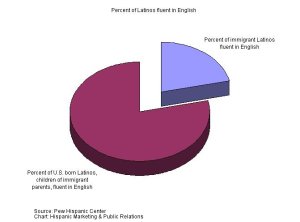
Click on image to enlarge
According to a series of six surveys conducted by the Pew Hispanic Center between 2002 and 2006 among 14,000 Latinos, most Hispanic adults born in the United States of immigrant parents say they speak English fluently. This is a sharp contrast to their foreign born parents; only a small minority of which consider that they are fluent in English.
Pew researchers, Shirin Hakimzadeh and D’Vera Cohn, analyzed the survey results and drafted a recent report concluding that less than 24 percent of foreign born Latinos consider they speak English very well while 88 percent of their U.S. born children consider themselves fluent in English.
The researchers also found respondents to the survey, of all generations, spoke English at work more frequently than at home. At the same time, more recent generations show a 94 percent of adults who consider they speak English. The figures for adults’ reading ability are similar to their speaking ability.
Target Latinos effectively by anticipating changes in the market with
“Hispanic Projections with 2007-08 update” audio recording

Presenter Roger Selbert, Ph.D.
Find out
- About Latino buying power growth in the future
- How Latino market growth compares with other markets in the U.S.
- What drives the rise of Latino economic clout
- Who should target the Latino market
- What is the size of the Hispanic affluent market
- If the luxury Latino market is growing
Stay ahead of your competion with “Hispanic Projections”
Highly educated immigrants who arrived in the United States as children or have lived in the country for many years were most likely to say they were fluent in English. Immigrants from Puerto Rico and South America were most likely to claim proficiency than Mexican-born respondents.
The report findings are based on four measures used by respondent to rate of their abilities, including their own English-speaking skills, their English-reading skills, their level of English use at home, and their level of English use at work.The researchers relied on the results of two of the surveys as well as a national survey conducted by the Pew Hispanic Center in October and November of 2007 which indicate Latinos believe inadequate English language skills are an obstacle to their acceptance in the United States. These findings are similar to those from previous surveys conducted by the Center.
The Pew Hispanic Center, an initiative of the Pew Research Center, is a non-partisan, non-advocacy research organization based in Washington, D.C. The Pew Hispanic Center is funded by The Pew Charitable Trusts.
“Segmentation by Level of Acculturation” audio recording

Presenter Miguel Gomez Winebrenner
Discusses
- Assimilation versus acculturation
- Factors that affect Latino acculturation
- How to know if someone is acculturated
- Number of years necessary for acculturation
- Effects of immigration debate on acculturation
- Three main ways of segmenting Latinos
Click here for details about “Segmentation by Level of Acculturation”
Posted by Elena del Valle on December 4, 2007

A scene from the new ComEd Spanish-language ad
Photos: The San Jose Group
ComEd recently launched a new Spanish-language advertising campaign to promote its compact fluorescent energy-saving light bulbs (CFL). The television and radio campaign, created by ComEd’s Hispanic advertising agency of record, the San Jose Group (SJG), highlights a company program that discounts compact fluorescent light bulbs.
According to information provided by The San Jose Group, the 30-second spots focus on a hairdresser and will air in Chicago and Rockford from October to December 2007. The agency’s team members believe the stylist character provides the right mix for a creative and simple execution, humor, credibility and a memorable medium. They hope a humorous approach to the serious topic of energy conservation will be well received by Spanish speaking Latino audiences.

Antonio Lovera, creative director at SJG
“Humor is a common cultural thread that transcends borders and nationalities,” said Antonio Lovera, creative director at SJG. “With the variety of Latin American cultures represented in ComEd’s marketplace, we used humor as an element to engage all Hispanics in a meaningful way.”
Taking advantage of the gossip stereotype of beauty shops, the 30 second ads focus on a hairdresser gossiping to a client about how a man left “her” for something younger, that lasts longer and even saves money. In fact, she’s referring to the new CFL bulb instead of her personal life.

A compact fluorescent energy-saving light bulb
According to promotional materials, CFL bulbs use 75 percent less energy than traditional light bulbs and last up to 10 times as long. Promoters say that replacing one standard bulb with a CFL can save customers up to $30 in electricity costs on their bill over the lifetime of the bulb.
The San Jose Group was recently reappointed as the Hispanic advertising agency of record for Exelon and its operating companies, ComEd and PECO, allowing the agency to continue to develop branding strategies and advertising executions for the company; and marking the continuation of a 12-year relationship between Exelon and The San Jose Group.
Commonwealth Edison Company (ComEd), a unit of Chicago-based Exelon Corporation, provides service to 3.7 million customers across northern Illinois, 70 percent of the state’s population. Incorporated in 1981 and headquartered in Chicago, The San Jose Group is a consortium of marketing communications companies specializing in reaching the Hispanic and non-Hispanic markets in the U.S. and Latin America.
“Best in Class Hispanic Strategies” audio recording


Presenters Carlos Santiago and Derene Allen
-
Find out what makes 25 percent of the top 500 Hispanic market advertisers out perform the remaining companies
-
Discover what questions to ask, steps to take to be a Best in Class company
Click here for details on “Best in Class Hispanic Strategies” audio recording
Posted by Elena del Valle on November 28, 2007
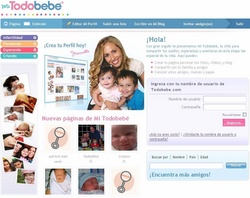
Click on image to enlarge
Photo: Todobebé
Todobebé Inc, a leading multimedia company of dedicated to parenting, recently launched Mi Todobebé, a social networking site for Spanish speaking families planning, expecting, and raising children. On the new website, visitors can share pregnancy photos, videos of their baby’s first steps and questions about infertility, breastfeeding and raising their children.
The idea for the website initially came from members of the online forum community. They wanted an online space, in Spanish, where they could personalize their own pages, upload photos, and invite their friends and family to view and to share in the joy of their children’s first smiles, tooth, steps, days of school and other special moments.
“Todobebé has earned the trust of Spanish speaking families over almost a decade,” said Jeannette Kaplun, editor in chief, host and founder of Todobebé. “They know us from our book, our TV show, radio, events, and our website, and they share with us their pregnancy photos, the videos of their baby’s first steps and their questions about infertility, breastfeeding or raising their children.”
“Latino Family Dynamics” audio recording


Brenda Hurley and Liria Barbosa
Discuss
- Latino purchasing habits and products they favor
- Latino family characteristics
- Latinos and extended families
- Division of duties, responsibilities within the family
- Who is the decision maker in the Latino family
- Who is the information provider in the Latino family
Click here to find out about Latino purchasing habits and “Latino Family Dynamics”
Mi Todobebé invites families to create personal profile pages where they can publish photos and videos of their pregnancy and children and create blogs on their personal pages where friends and loved ones can participate. They can also meet other members, and via invitation, make new friends living through similar experiences. According to promotional materials, Mi Todobebé allows members to control their level of privacy, approve who can view their profile page and decide whether to communicate with other members.
The free membership to Mi Todobebé also provides access to the rest of Todobebé’s online tools including expert tips, personalized pregnancy and child development newsletters, baby name finder, ovulation calendar, and forums.
“Mi Todobebé is just the beginning of a series of new online features, tools, events and incentives that the company is rolling out in 2008,” said Cynthia Nelson, chief operating officer of Todobebé, Inc. “Mi Todobebé and the expanding Todobebe.com platform is an exciting and growing world and truly allows advertisers the chance to connect, engage, brand, promote, and learn about Spanish speaking families within a positive, engaging, fun and relevant context.”
In its ninth year of operations, Todobebé Inc. reaches United States Spanish speaking Latino parents with books, television programs, radio, events and online. Todobebe.com, the online platform of Todobebé Inc., seeks to inform and entertain with original content, exclusive videos, and advice from experts.
“Marketing to New Hispanic Moms – a case study” audio recording

Presenter Cynthia Nelson, COO, Todobebe
Find out about
• New Latina mom market
• Baby demographics including market size, profile
• New moms’ language preferences
• Latino baby market trends
• Factors influencing Hispanic baby market
• Location of new Hispanic moms’ market
• Issues affecting new Latino moms
• Todobebe strategies
Click for information on “Marketing to New Hispanic Moms – a case study”








































